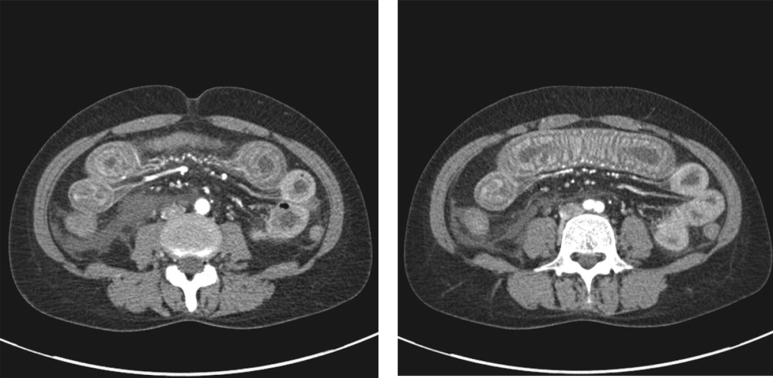Systemic lupus erythematosus (SLE) is a systemic autoimmune disease and has systemic features that can affect all organs. Steroid therapy is an essential treatment option in SLE involving the kidneys, other internal organs, or central nervous system.
A 42-year-old woman with a 10-year history of SLE presented with nonspecific nausea, vomiting, and diarrhea. She experienced lupus enteritis 7┬Āyears earlier, which was cured with steroid treatment┬Āand, since then, had demonstrated stable disease with steroid and disease-modifying antirheumatic drug treatment. Vital signs were stable, and there were no signs of surgical abdomen. Laboratory investigations were normal except for C3 and C4 (69.2┬Āand 7.2┬Āmg/dL, respectively). Abdominal computed tomography revealed typical target sign indicating inflammatory edema of the small bowel (Fig.┬Ā1). The patient recovered completely after immediate treatment with steroid pulse therapy under a diagnosis of lupus enteritis.
Lupus enteritis can present with nonspecific symptoms and can lead to fatal intestinal bleeding or perforation. Thus, it is important to diagnose lupus enteritis and start treatment as early as possible. If a patient with SLE presents with nonspecific symptoms such as abdominal pain and diarrhea, lupus activity should be investigated under the suspicion of lupus enteritis.




 PDF Links
PDF Links PubReader
PubReader Full text via DOI
Full text via DOI Download Citation
Download Citation Print
Print
















